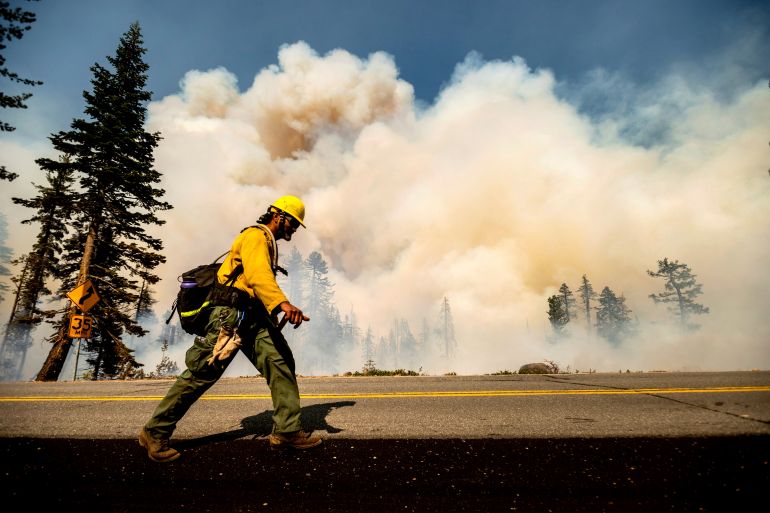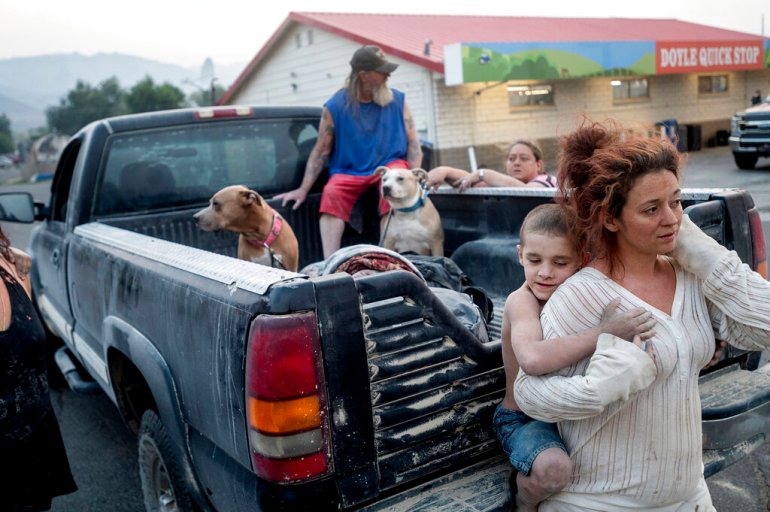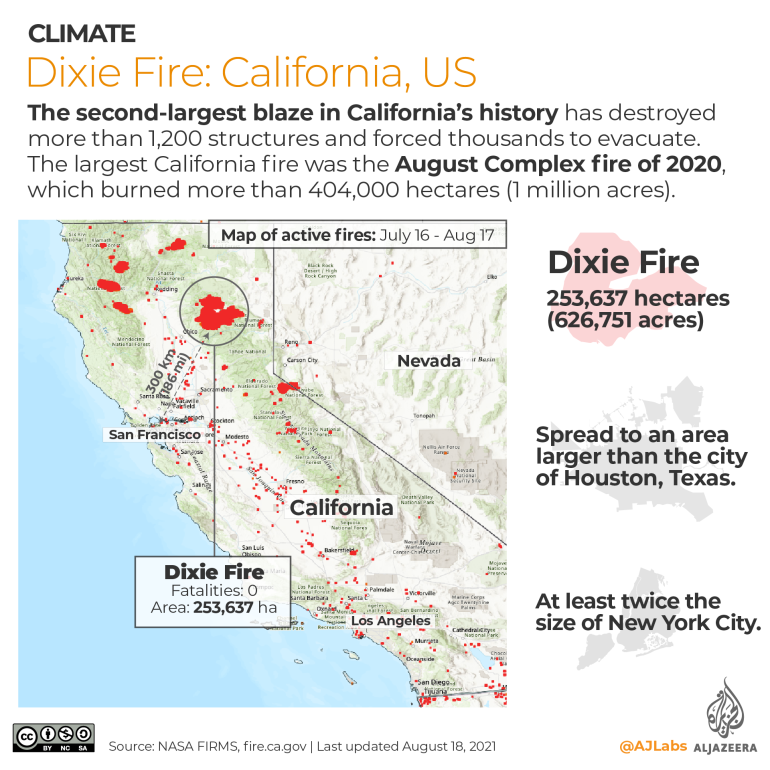Dixie, other wildfires advance through Northern California
Houses reduced to smouldering ash and twisted metal with only chimneys rising above the ruins.

Northern California wildfires that incinerated two communities continue marching through the Sierra Nevada mountains on Wednesday while an electricity company cut power to 51,000 customers to prevent new blazes on Tuesday.
Two weeks after the Dixie Fire destroyed most of the Gold Rush-era town of Greenville, the Caldor Fire a few miles southeast exploded through tinder-dry trees and ravaged Grizzly Flats, a forest community of approximately 1,200 people.
Keep reading
list of 4 itemsUS wildfires: Firefighter dies battling California blaze
Weather aids fight against US wildfires, but death toll climbs
US wildfires: How climate change is spurring deadly blazes
Fire officials estimated that at least 50 homes had burned in the area since the fire erupted Saturday and two people were hospitalised with serious injuries.
California Governor Gavin Newsom proclaimed a state of emergency in El Dorado County, where authorities were considering closing the entire El Dorado National Forest.
“We know this fire has done things that nobody could have predicted, but that’s how firefighting has been in the state this year,” El Dorado National Forest Supervisor Chief Jeff Marsolais said at a briefing.
Both fires grew by tens of thousands of acres from August 16, torching trees and burning up brush left tinder-dry by high temperatures, low humidity and drought. Afternoon gusts drove the flames.

Few homes were left standing in Grizzly Flats, where streets were littered with downed power lines and poles. Houses were reduced to smouldering ash and twisted metal with only chimneys rising above the ruins. A post office and elementary school were also destroyed.
Derek Shaves, who had evacuated late Monday, said he visited the town Tuesday and saw his home and most of the houses in his neighbourhood had been destroyed.
“It’s a pile of ash,” he said. “Everybody on my block is a pile of ash and every block that I visited — but for five separate homes that were safe — was totally devastated.”
At the Dixie Fire, numerous resources were put into the Susanville area, a city of about 18,000 a few miles from the northeastern edge of the blaze. Residents were warned to be ready to evacuate and new evacuations were ordered on August 17 for the month-old blaze, which was only a third surrounded.
Late on August 17, Pacific Gas & Electric said it has begun shutting off power to as many as 51,000 customers in 18 Northern California counties to prevent wildfires for the first time since last year’s historically bad fire season.

The utility said the shutoffs were focused in the Sierra Nevada foothills, the North Coast, the North Valley and the North Bay mountains and could last into Wednesday afternoon.
The nation’s largest utility announced the blackouts as a precaution to prevent gusts from damaging power lines and sparking blazes.
PG&E has notified utility regulators that the Dixie Fire may have been caused by trees falling into its power lines. The Dixie Fire began near the town of Paradise, which was devastated by a 2018 wildfire ignited by PG&E equipment during strong winds. Eighty-five people died then.
The Dixie Fire is the largest of nearly 100 major wildfires burning across a dozen Western states, including Alaska. The wildfires, in large part, have been fuelled by high temperatures, strong winds and dry weather.
Climate change has made the US West warmer and drier in the past 30 years and will continue to make the weather more extreme and wildfires more destructive, according to scientists.